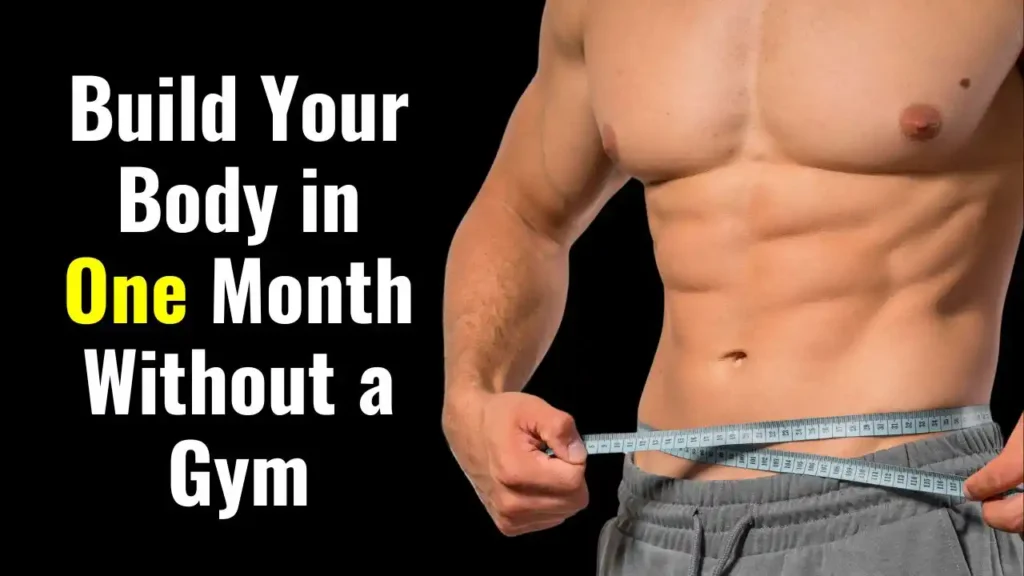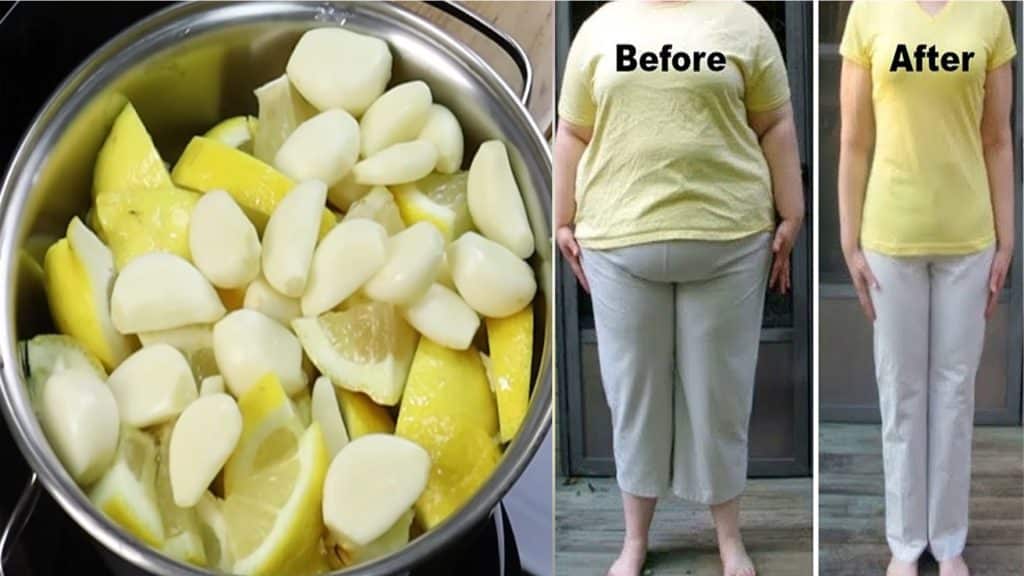Building your body and achieving a fit, muscular physique is a common goal for many individuals. However, not everyone has access to a gym or the time to commit to regular visits. The good news is that you can build your body and achieve significant improvements in strength and muscle tone within a month, all without setting foot in a gym. This comprehensive guide will walk you through the strategies, exercises, and lifestyle changes you need to adopt to build your body effectively at home.

Understanding the Basics
Setting Realistic Goals
Before embarking on any fitness journey, it is crucial to set realistic and achievable goals. While one month is a relatively short period, you can still make noticeable improvements in your physique. Focus on goals such as:
- Increasing muscle tone and definition.
- Improving overall strength and endurance.
- Reducing body fat and increasing lean muscle mass.
- Establishing a sustainable workout routine.
The Importance of Consistency
Consistency is key when it comes to building your body. A well-structured plan that you follow diligently will yield better results than sporadic, intense workouts. Commit to a routine that includes regular exercise, proper nutrition, and adequate rest.
Nutrition: Fueling Your Body
Nutrition plays a pivotal role in muscle growth and overall fitness. To build your body in one month, pay attention to your diet. Focus on consuming:
- Protein: Essential for muscle repair and growth. Include lean meats, fish, eggs, dairy products, legumes, and plant-based protein sources.
- Carbohydrates: Provide energy for workouts. Opt for complex carbs like whole grains, vegetables, and fruits.
- Healthy Fats: Support overall health. Include sources like avocados, nuts, seeds, and olive oil.
- Hydration: Drink plenty of water to keep your body hydrated and support metabolic functions.
Home Workout Routine
A well-rounded workout routine is essential for building your body. The following exercises can be performed at home with minimal equipment. Aim to work out at least five days a week, incorporating both strength training and cardiovascular exercises.
Strength Training Exercises
Strength training is crucial for building muscle mass and increasing strength. Here are some effective bodyweight exercises you can do at home:
Push-Ups
Push-ups are a classic exercise that targets the chest, shoulders, and triceps. They also engage the core muscles.
How to Perform:
- Start in a plank position with your hands placed slightly wider than shoulder-width apart.
- Lower your body until your chest nearly touches the floor.
- Push yourself back up to the starting position.
- Perform 3 sets of 10-15 repetitions.
Squats
Squats are excellent for building the muscles in your legs, including the quadriceps, hamstrings, and glutes.
How to Perform:
- Stand with your feet shoulder-width apart.
- Lower your body by bending your knees and pushing your hips back as if sitting in a chair.
- Keep your chest up and back straight.
- Return to the starting position.
- Perform 3 sets of 15-20 repetitions.
Planks
Planks are a great way to strengthen your core muscles, including the abs, obliques, and lower back.
How to Perform:
- Start in a push-up position, but rest on your forearms instead of your hands.
- Keep your body in a straight line from head to heels.
- Hold the position for as long as possible, aiming for at least 30 seconds.
- Perform 3 sets.
Lunges
Lunges work the muscles in your legs and glutes while also improving balance and coordination.
How to Perform:
- Stand with your feet together.
- Step forward with one leg and lower your body until both knees are bent at 90-degree angles.
- Push back up to the starting position and repeat on the other leg.
- Perform 3 sets of 12-15 repetitions per leg.
Dips
Dips target the triceps, chest, and shoulders. You can use a sturdy chair or bench for this exercise.
How to Perform:
- Sit on the edge of the chair or bench with your hands gripping the edge beside your hips.
- Slide your hips off the edge and lower your body by bending your elbows.
- Push yourself back up to the starting position.
- Perform 3 sets of 10-12 repetitions.
Cardiovascular Exercises
Cardiovascular exercises help improve heart health, burn calories, and enhance overall fitness. Incorporate these exercises into your routine:
Jumping Jacks
Jumping jacks are a simple yet effective cardio exercise that can be done anywhere.
How to Perform:
- Stand with your feet together and arms at your sides.
- Jump your feet out while raising your arms overhead.
- Jump back to the starting position.
- Perform 3 sets of 30-60 seconds.
Burpees
Burpees are a full-body exercise that combines strength and cardio.
How to Perform:
- Start in a standing position.
- Drop into a squat position and place your hands on the floor.
- Kick your feet back into a plank position.
- Perform a push-up.
- Jump your feet back to the squat position and then jump up with your arms overhead.
- Perform 3 sets of 10-15 repetitions.
High Knees
High knees are great for increasing your heart rate and working your lower body.
How to Perform:
- Stand with your feet hip-width apart.
- Run in place, bringing your knees up toward your chest as high as possible.
- Pump your arms as you run.
- Perform 3 sets of 30-60 seconds.
Mountain Climbers
Mountain climbers are a dynamic exercise that targets the core, legs, and cardiovascular system.
How to Perform:
- Start in a plank position.
- Bring one knee toward your chest, then quickly switch legs.
- Continue alternating legs at a rapid pace.
- Perform 3 sets of 30-60 seconds.
Lifestyle Changes for Optimal Results
In addition to a solid workout routine, certain lifestyle changes can enhance your progress and help you achieve your body-building goals more effectively.
Sleep and Recovery
Adequate sleep and recovery are essential for muscle growth and overall health. Aim for 7-9 hours of quality sleep each night. During sleep, your body repairs and builds muscle tissue, allowing you to recover from workouts and perform at your best.
Stress Management
Chronic stress can hinder your fitness progress by increasing cortisol levels, which can lead to muscle breakdown and fat retention. Practice stress management techniques such as meditation, deep breathing exercises, and yoga to keep stress levels in check.
Avoiding Alcohol and Tobacco
Alcohol and tobacco can negatively impact your fitness goals. Alcohol can interfere with muscle recovery and disrupt sleep patterns, while tobacco can impair lung function and overall cardiovascular health. Reducing or eliminating these substances from your lifestyle can enhance your fitness journey.
Staying Active Throughout the Day
Incorporate more physical activity into your daily routine. Take the stairs instead of the elevator, walk or bike to nearby destinations, and engage in activities that keep you moving. Staying active throughout the day complements your workout routine and contributes to overall fitness.
Tracking Your Progress
Tracking your progress is crucial for staying motivated and making necessary adjustments to your routine. Keep a workout journal or use a fitness app to log your exercises, sets, and repetitions. Take regular measurements of your body, including weight, body fat percentage, and muscle circumference, to monitor your progress over the month.
Sample Weekly Workout Plan
Here is a sample weekly workout plan to help you structure your routine and ensure you are targeting all major muscle groups.
Week 1
Day 1: Upper Body
- Push-Ups: 3 sets of 10-15 reps
- Dips: 3 sets of 10-12 reps
- Planks: 3 sets, hold for 30-60 seconds
- Jumping Jacks: 3 sets of 30-60 seconds
Day 2: Lower Body
- Squats: 3 sets of 15-20 reps
- Lunges: 3 sets of 12-15 reps per leg
- High Knees: 3 sets of 30-60 seconds
Day 3: Full Body
- Burpees: 3 sets of 10-15 reps
- Mountain Climbers: 3 sets of 30-60 seconds
- Planks: 3 sets, hold for 30-60 seconds
Day 4: Rest Day
- Focus on light stretching and recovery activities.
Day 5: Upper Body
- Push-Ups: 3 sets of 10-15 reps
- Dips: 3 sets of 10-12 reps
- Planks: 3 sets, hold for 30-60 seconds
- Jumping Jacks: 3 sets of 30-60 seconds
Day 6: Lower Body
- Squats: 3 sets of 15-20 reps
- Lunges: 3 sets of 12-15 reps per leg
- High Knees: 3 sets of 30-60 seconds
Day 7: Full Body
- Burpees: 3 sets of 10-15 reps
- Mountain Climbers: 3 sets of 30-60 seconds
- Planks: 3 sets, hold for 30-60 seconds
Week 2
Repeat the workout plan from Week 1, but increase the intensity by adding more repetitions, sets, or duration to each exercise.
Week 3
Continue with the same exercises but incorporate variations to keep
your routine challenging. For example:
- Push-Ups: Try different variations like diamond push-ups or decline push-ups.
- Squats: Incorporate jump squats or hold a weight (such as a filled backpack) while performing the exercise.
- Planks: Try side planks or plank variations like plank jacks.
Week 4
In the final week, push yourself further by increasing the intensity and volume of your workouts. Aim to complete more repetitions, hold planks for longer durations, and incorporate additional cardio exercises such as running or cycling if possible.
Nutrition Tips for Building Muscle
As mentioned earlier, nutrition is a critical component of building your body. Here are some additional tips to optimize your diet for muscle growth:
Protein Intake
Protein is essential for muscle repair and growth. Aim to consume 1.2 to 2.2 grams of protein per kilogram of body weight daily. Include a source of protein in every meal and snack. Some high-protein foods to consider are:
- Chicken breast
- Turkey
- Lean beef
- Fish (salmon, tuna)
- Eggs
- Greek yogurt
- Cottage cheese
- Beans and legumes
- Tofu and tempeh
Carbohydrates for Energy
Carbohydrates provide the energy needed for intense workouts. Choose complex carbohydrates that release energy slowly, keeping you fueled throughout the day. Examples include:
- Oats
- Brown rice
- Quinoa
- Sweet potatoes
- Whole grain bread
- Fruits (bananas, berries, apples)
- Vegetables (broccoli, spinach, carrots)
Healthy Fats
Healthy fats support overall health and hormone production. Include sources of omega-3 and omega-6 fatty acids in your diet. Examples include:
- Avocados
- Nuts (almonds, walnuts)
- Seeds (chia seeds, flaxseeds)
- Olive oil
- Fatty fish (salmon, mackerel)
Hydration
Staying hydrated is crucial for muscle function and overall health. Aim to drink at least 8-10 glasses of water per day. Increase your water intake if you are engaging in intense workouts or sweating heavily.
Meal Timing
Consider your meal timing to maximize muscle growth and recovery:
- Pre-Workout: Consume a balanced meal with protein and carbohydrates 1-2 hours before exercising. This provides energy for your workout and supports muscle preservation.
- Post-Workout: Consume a meal or snack rich in protein and carbohydrates within 30 minutes to 2 hours after your workout. This helps replenish glycogen stores and promotes muscle recovery.
Supplements
While a well-balanced diet should provide most of the nutrients you need, certain supplements can support your fitness goals. Consider the following:
Protein Powder
Protein powder is a convenient way to increase your protein intake. Whey protein, casein protein, and plant-based protein powders are popular options. Use protein powder to make shakes or add it to smoothies, oatmeal, or baked goods.
Creatine
Creatine is a popular supplement that can enhance muscle strength and performance. It helps increase the production of ATP, the primary energy source for muscle contractions. Take 3-5 grams of creatine monohydrate daily for optimal results.
Branched-Chain Amino Acids (BCAAs)
BCAAs (leucine, isoleucine, and valine) are essential amino acids that support muscle protein synthesis and reduce muscle breakdown. Consuming BCAAs before or during workouts can help improve endurance and recovery.
Omega-3 Fatty Acids
Omega-3 fatty acids have anti-inflammatory properties and support overall health. If you don’t consume fatty fish regularly, consider taking an omega-3 supplement derived from fish oil or algae.
Staying Motivated
Maintaining motivation is essential for sticking to your fitness plan and achieving your goals. Here are some tips to stay motivated throughout the month:
Set Short-Term Goals
While your ultimate goal is to build your body in one month, setting short-term goals can keep you focused and motivated. Break down your goal into weekly or even daily targets. Celebrate small achievements along the way to stay motivated.
Track Your Progress
Keep a workout journal or use a fitness app to track your progress. Document your exercises, sets, repetitions, and any changes in your body measurements. Seeing your progress on paper can be highly motivating and help you stay on track.
Find a Workout Buddy
Having a workout buddy can provide accountability and make your workouts more enjoyable. Find a friend or family member with similar fitness goals and work out together. You can encourage each other, share tips, and celebrate achievements.
Mix Up Your Routine
Variety is key to preventing boredom and keeping your workouts interesting. Mix up your routine by trying new exercises, changing the order of your workouts, or incorporating different types of cardio. This keeps your body challenged and engaged.
Reward Yourself
Set up a reward system for reaching milestones in your fitness journey. Treat yourself to something special, like a new workout outfit, a massage, or a favorite healthy treat. Rewards can provide extra motivation to stay committed.
Conclusion
Building your body in one month without a gym is an achievable goal with the right approach and dedication. By following a well-structured workout routine, paying attention to nutrition, and making positive lifestyle changes, you can make significant progress in a short period. Remember that consistency, determination, and a positive mindset are key to achieving your fitness goals. Stay committed, track your progress, and celebrate your achievements along the way. With hard work and perseverance, you’ll be well on your way to a stronger, healthier, and more toned body.




